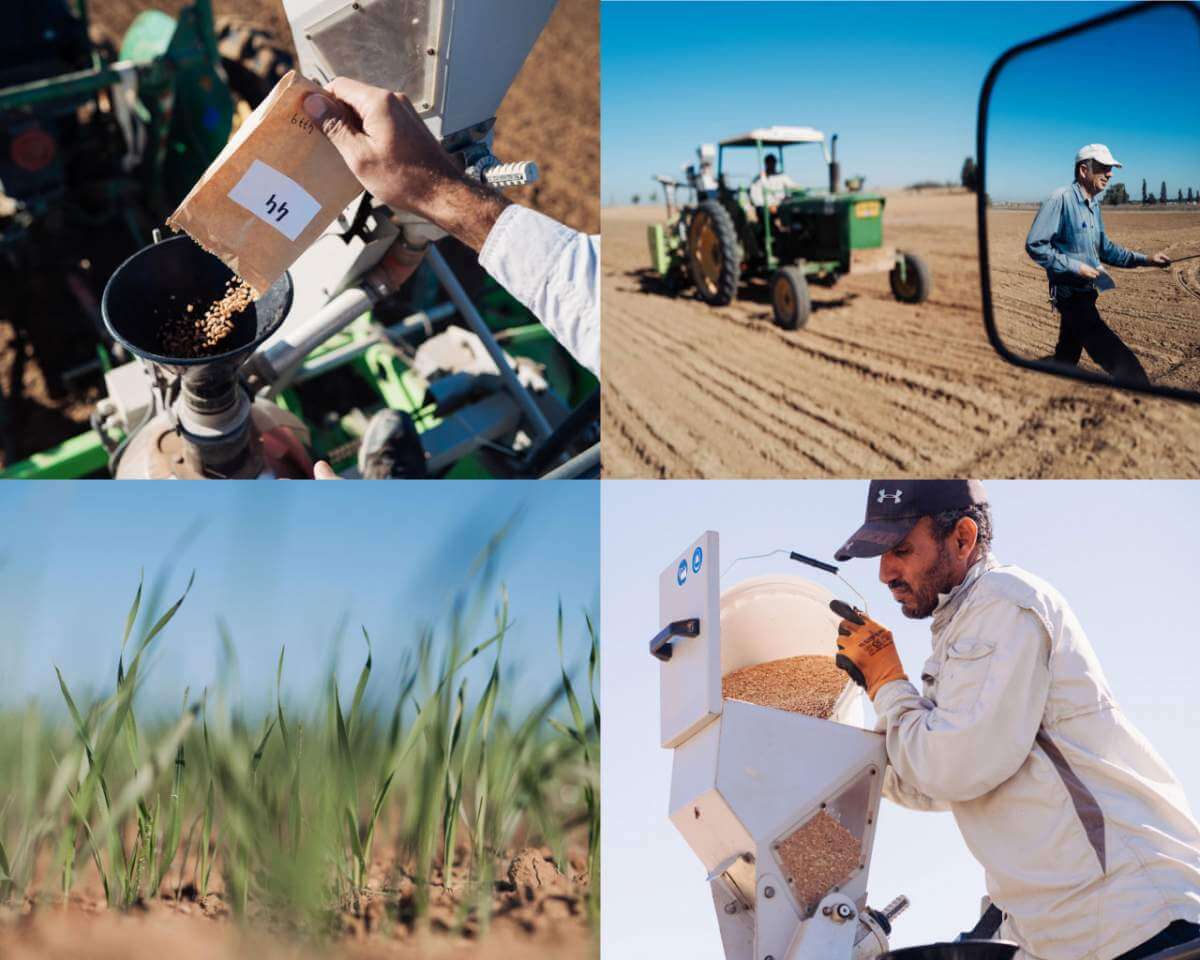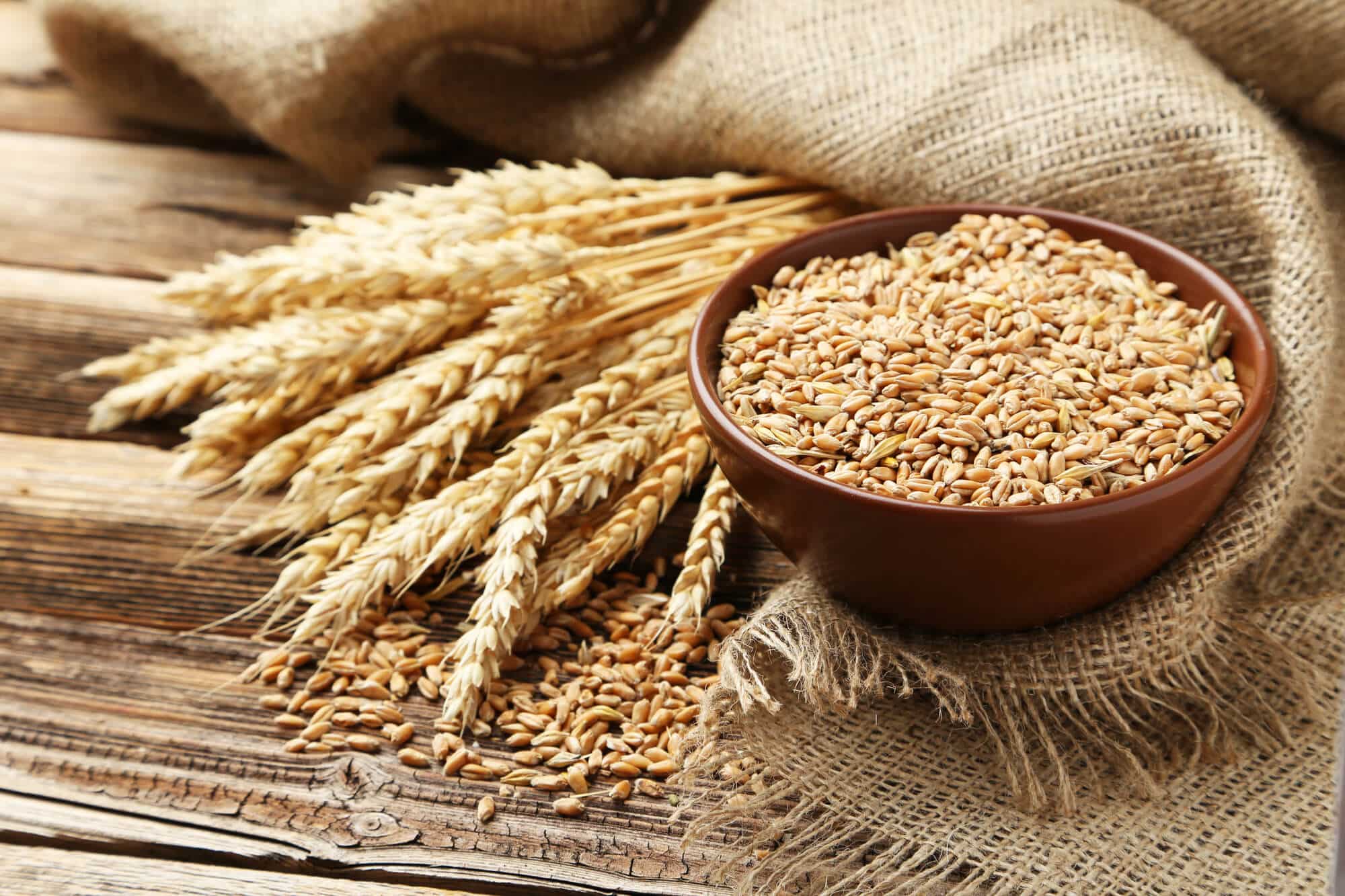The growth of wheat has become an Israeli symbol of hope and renewal after a disaster. So are Prof. Avraham Levy's field experiments in the Gaza Envelope, which continue a glorious Israeli legacy of researching the evolution and genetics of the world-famous grain

As every year in the last decade, this year too, Prof. Abraham Levy and Naomi Avivi Regulski from the Department of Plant and Environmental Sciences to conduct a field trial of growing wheat varieties at the Gilat research station near Ofakim. This year the experiment was designed to examine an important issue in plant research: which wheat variety wins - a variety known as a "local hero" and adapted to the environmental conditions in the region where it grows, or rather a "general" variety adapted to a wide variety of growing conditions.
But on October 7, following the surprise attack by Hamas, the entire area became a combat zone. Hundreds of rockets were fired into the northern Negev from Gaza, and most of the civilian population was evacuated from the area. The great destruction that was sown did not pass over the agricultural crops in this area known as "the granary of Israel". Among the many murdered that day was Zeev Heker, the director of agriculture at Kibbutz Bari who had previously assisted Prof. Levy's field experiments. Heker and his wife Zahva were murdered by terrorists who infiltrated the kibbutz.
"Zev was a man of the land, a farmer with every inch of his limbs... Many farmers came to learn from him and consult him. Every time he loved to cultivate, sow, water and harvest. Even when he retired at the age of 70, he continued to be informed on a daily basis of what was happening in the fields and on the land," the people of Bari tell about him. Prof. Levy himself told about his joint work with Heker to the kibbutz evacuees who came to tour the institute recently.
"This is our way of showing that we never give up," says Prof. Levy, who has been devoted to wheat research for 40 years
Despite and perhaps because of the difficult events, Prof. Levy, together with Dr. David Bonfil of Gilat, decided to hold the experiment as it was, as a symbol of renewal and standing firm in the face of difficulties. During the month of November, when the fighting in Gaza was in full swing, the researchers went to the field to sow the wheat. "This is our way of showing that we never give up," says Prof. Levy, who has been dedicated to wheat research for 40 years.
The field experiments in Gilat - a research station belonging to the Agricultural Research Administration of the Ministry of Agriculture - are part of a wider project in Prof. Levy's laboratory dedicated to the study of the biological diversity of the wild varieties of wheat, and in particular the wild variety known as the "mother of wheat" which was discovered more than 110 years ago near Rosh Pina by Aharon Aharonson, one of the pioneers of scientific research in the Land of Israel and head of the Nili underground.
Prof. Levy's laboratory develops technologies for the precise transfer of beneficial genetic traits from wild varieties of wheat to domesticated wheat varieties using advanced genomic tools. These properties, for example the ability to grow with a small amount of fertilizer or a high resistance to heat, drought or diseases, may help wheat to adapt to new conditions - a matter of crucial importance in light of the climate crisis that threatens the availability of food on the planet.
Another important feature that can be harnessed from the wild varieties is improved nutritional values. For example, during his doctoral studies at the Weizmann Institute, under the guidance of Prof. Moshe Feldman, Prof. Levy mapped the genes of the wheat mother responsible for a greater protein content in its grains compared to the domesticated varieties.
The wheat grows again

The research on wheat by the institute's scientists and the firm stand of the Otaf farmer in the face of the horrors of October 7 served as inspiration for a media project by the Weizmann Institute calling for the return of the abductees from Gaza. As part of the project named #TheWheatGrowsAgain, went online A site in English documenting 24 hours a day wheat seedlings growing in the institute's greenhouses, alongside an updated list of the abductees, and a stopwatch counting the time that has passed since they were abducted by Hamas.
"At a time when many academic institutions abroad maintained a thunderous silence at best or justified the manifestations of violence and terrorism by Hamas at worst, the institute was clear that it is of great importance to take a firm position and call for the release of innocents - including children, infants and the elderly. Along with public letters sent to the heads of universities around the world, calling on them to stop the manifestations of anti-Semitism in their institutions, we also saw fit to produce a media campaign in English addressed to the entire international community and surfers abroad, with the aim of raising awareness of the Israeli abductee crisis," the project's dedicated website reads.
The wheat that grows and is recorded live was sown by Prof. Levy himself, who accompanies the project, and is one of the wheat varieties that are also sown in the field experiments in Gilat, which surrounds Gaza. The growth of wheat was chosen, among other things, because of the cultural charge of the song "The Wheat Grows Again" which symbolizes hope and renewal after a disaster and was written by Kibbutz Beit al-Hashitya, the deceased Dorit Tzamerat Hamocha, after 11 members of the kibbutz fell in the Yom Kippur War. Fifty years later, it is gradually becoming the anthem of the current period as well.
670 pages of wheat
Recently Prof. Feldman and Prof. Levy published a book dedicated entirely to wheat. the book Wheat Evolution and Domestication (The evolution of wheat and its domestication), covers a hundred years of wheat research, starting with the discovery of the exact number of chromosomes in its genome in 1918 and up to the present day. The 670-page book is a kind of encyclopedia of wheat: it discusses not only 31 varieties of wheat, but also more distant relatives of the grain so necessary to mankind. The range of topics is very wide, from the history of wheat domestication that began more than ten thousand years ago to the unique aspects of its genome and suggestions for its future improvement.
"Wheat does much more than we do," explains Prof. Feldman, explaining why certain types of wheat have a huge number of genes, about 120, about five times more than the human genome. "Wheat, for example, produces carbohydrates while we consume carbohydrates... and unlike us, wheat communicates with the soil through its roots and grows almost everywhere on earth - which requires genes that will allow it to adapt to very diverse conditions." Prof. Feldman has been researching the nutritious plant since his doctoral studies on the evolution of wild wheat in the 90s, and he continues to do so even today at the age of XNUMX. In the early XNUMXs, when he established his laboratory at the Weizmann Institute of Science, Prof. Levy joined him, first as a research student and later as a colleague .
Both authors decided to offer the The online version of their book Free of charge through the website of the publisher "Springer". Already in the first month it was downloaded by more than 10 thousand readers. Prof. Levy explains: "We wanted it to be available not only to wheat researchers and growers, but to all plant researchers and students."
More of the topic in Hayadan:
